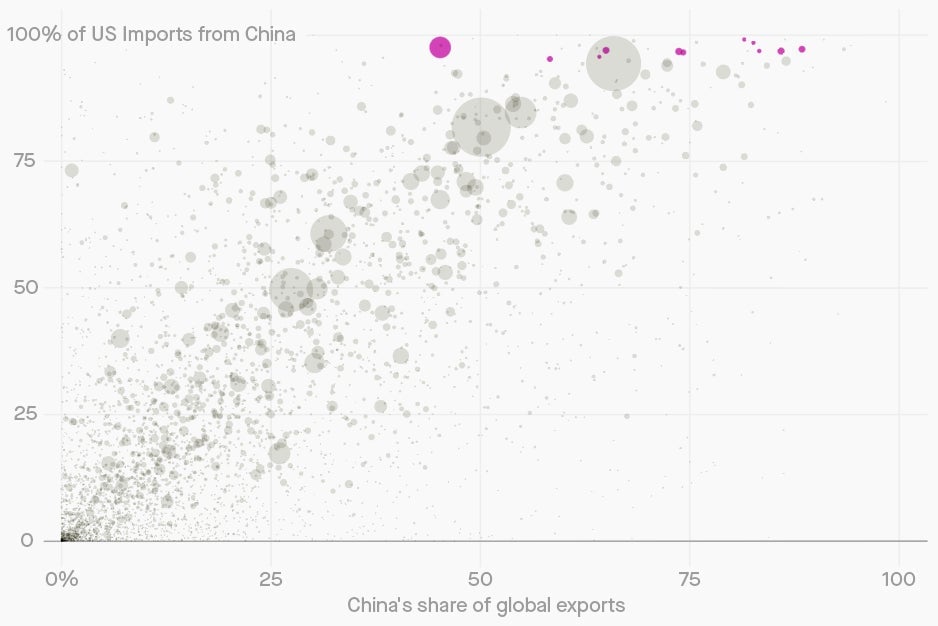The US will have a hard time not getting these products from China
China and the US are returning the negotiating table today in an effort end their trade war. The talks will take place in Shanghai, and will be led by Chinese Vice-Premier Liu He and Treasury Secretary Steven Mnuchin.


China and the US are returning the negotiating table today in an effort end their trade war. The talks will take place in Shanghai, and will be led by Chinese Vice-Premier Liu He and Treasury Secretary Steven Mnuchin.
For consumers in the US, the stakes are high.
The US imports a lot of stuff from China. Over $560 billion worth of goods came into the US from China in 2018, making up more than 21% of the value of all goods the US imported. In May, the US threatened to add an additional 25% tariff on goods that account for $300 billion worth of annual imports.
For many of the products China supplies, the US also buys elsewhere. For example, the US imports about $100 million dollars in soy sauce every year. China supplies 42%. But it also gets a lot of soy sauce from Japan (17%), Hong Kong (14%) and Thailand (7%). If the US raises tariffs on Chinese soy sauce, importers might shift their buying to these other countries to avoid cost increases.
Then there are the products the US almost exclusively gets from China. Raising tariffs on these goods will likely cost American consumers, and leave importers in a bind to find substitutes in the short-term—in the long-run, manufacturers may look to produce these goods outside China. We identified11 product categories 1 that China supplied 95% of US imports worth at least $100 million in 2018 by analyzing data from the US Census Bureau. All 11 product categories were on the list of goods for which the US has threatened to raise tariff rates by 25%. The US has since agreed to delay these hikes as part of negotiations. Here are those products.